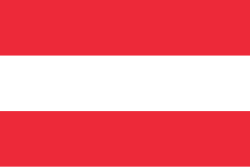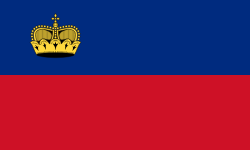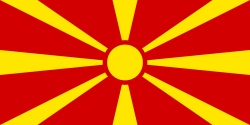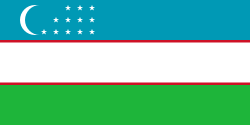General Information
Population
Immigration
Emigration
Working-age population
Unemployment rate
GDP
Refugees, Asylum seekers, IDPs
Citizenship
Territory
Migration Authorities
Responsible Body
Line Ministries
Agencies
Key Policy Documents
1993 Law on the Legal Status of Foreign Nationals in the Kyrgyz Republic
2000 Law on External Migration
2002 Law on Internal Migration
2005 Law on Preventing and Combating Human Trafficking
2006 (2020) Law on External Labour Migration
2007 (2016) Law on Citizenship
2007 (2015) Law on State Guarantees for Ethnic Kyrgyz Immigrating to the Kyrgyz Republic
2019 Resolution No. 175, On Some Issues in the Field of Labour Migration in the Kyrgyz Republic
2019 National Development Strategy of the Kyrgyz Republic for 2018-2040
Concept of the Migration Policy of the Kyrgyz Republic for 2021–2030
2021 National Development Programme of the Kyrgyz Republic until 2026 and Its Action Plan
Description
The Kyrgyz Republic is predominantly a country of emigration, with the number of citizens living abroad increasing by 48% between 1990 and 2020. Nonetheless, the population of Kyrgyzstan is growing at 2 % per year due to high fertility rates, placing the country among the fastest growing in Asia, after Afghanistan, Tajikistan, Iraq, Pakistan and Yemen.
Net migration has been consistently negative, with more people leaving the country than arriving, but the outflow has been on decline. According to the National Statistical Committee of Kyrgyzstan, the number of persons who left the country for permanent residence abroad decreased from over 45,000 in 2011 to 4,054 in 2023.
While permanent migration is less widespread, temporary labour migration flows from Kyrgyzstan remain considerable. Labour migration is an integral part of the subsistence of many Kyrgyz families that rely heavily on remittances, which account for nearly 18,6 % of the country’s GDP. Experts argue that around one million Kyrgyz nationals of working age support their families by working abroad. Their decision to migrate arises primarily from economic motives such as dissatisfaction with wages (26%), lack of job opportunities (17%), financial difficulties and debts (16%), and a perceived lack of prosperity in the country (10%).
Similar to the overall migration flows, labour migrants primarily target Russia (79%), Kazakhstan (4.5%), and Türkiye (4%) as of 2023. Other destinations include the EU, the United Kingdom, South Korea, Japan, Gulf states, and Egypt. The number of Kyrgyz migrant workers in Russia increased from 477,942 in 2021 to 718,414 in 2023 (nearly 173,000 migrated in the first quarter of 2023 for employment). Almost 40 % of Kyrgyz labour migrants in Russia are women employed in the services, catering, textile and domestic sectors with many of them working informally.
Within the EU, Poland (2,340), Hungary (1,758) and Lithuania (1,111) were issuing the most first-time residence permits for remunerated activities to Kyrgyz nationals in 2022. In 2023, Hungary issued 3,652 of such permits that follows the government’s policy to attract labour migrants from Central Asia. In Lithuania, the number of Kyrgyz nationals increased from 2,000 in 2023 to 6,600 in 2024. Similarly, in Bulgaria, Kyrgyz citizens represented the largest contingent of seasonal workers in 2023 with over 2,033 registered arrivals.
According to UN DESA, in 2020 Kyrgyzstan was home to some 200,000 foreigners, primarily from Russia, Ukraine, Kazakhstan, Belarus, and Uzbekistan. Following the partial military mobilisation announced in Russia in September 2022, Kyrgyzstan saw an influx of Russian nationals. By the end of 2022, it was estimated that around 30,000 Russians were in Kyrgyzstan. In 2023, the National Statistical Committee recorded 12,313 arrivals, up from 1,974 in 2017, with the largest numbers coming from Russia (77%), followed by Tajikistan (7%), Kazakhstan (4%) and Uzbekistan (3%).
The increased immigration has brought both benefits and challenges to the country. Kyrgyzstan benefited from capital inflows and an influx of skilled workers, while considering related political and security challenges, as well as limitations in its institutional and infrastructure capacities to accommodate the large number of arrivals. In late 2023, Kyrgyzstan suspended the 'visa-run' policy, which previously allowed citizens of the Eurasian Economic Union (EEU), including Russians, to extend their visa-free stay by re-entering the country. As of October 2023, all EEU nationals can stay in Kyrgyzstan visa-free for only 90 days within a 180-day period, unless they are registered at a place of residence or hold relevant residence permits. Additionally, the "Digital Nomad" program, launched in August 2022, offers incentives such as visa-free stays and work permits, making Kyrgyzstan an attractive destination for remote workers and freelancers.
In 2024, Kyrgyzstan increased its quota for foreign workers to a record-breaking 24,000, compared to 16,000 in 2023 and 10,000 in 2020. As a rule, Chinese nationals make up the majority of these quota labour migrants in Kyrgyzstan, working in sectors such as industry, construction, transport, energy, mining, and catering, as well as in joint Sino-Kyrgyz ventures. Immigration flows also include ethnic Kyrgyz, whose return is supported through the state programme ‘Kairylman’ (returnee). In 2018, the stock of kairylmans living in Kyrgyzstan was estimated at over 35,000. The Kyrgyz Republic committed to provide refugees, asylum-seekers, stateless persons, and individuals seeking "Kairylman" status with access to State-provided free legal aid by the end of 2024.
In addition to Russian migrants, Kyrgyzstan is now attracting workers from Bangladesh, India, and Pakistan. Despite being a migrant-sending country, Kyrgyzstan faces labour shortages, as many citizens prefer working abroad over low local wages. The garment industry particularly relies on foreign workers from Bangladesh and Pakistan. However, the anti-migrant unrest in Bishkek on 18 May 2024 that targeted South Asian workers and students, and resulted in several injuries, underscored the need for Kyrgyz authorities to recognize the changing migration landscape and develop policies to protect and integrate migrant workers.
In 2020, the Ministry of Internal Affairs reported 1,328 violations of migration laws, along with 165 violations of entry, exit, and stay regulations. Additionally, 12 criminal cases were initiated for the organization of irregular migration. Key factors contributing to irregular migration in Kyrgyzstan include inadequate migration control, porous borders, a strategic transit location, and gaps in legislation and international agreements.
As of January 2024, Kyrgyzstan hosted 251 refugees, 1,206 asylum-seekers and 21 persons without citizenship. Most refugees come from Afghanistan. In view of the volatile situation in Afghanistan in summer 2021, Kyrgyzstan announced its readiness to host over 1,000 Afghan refugees. As a signatory to the 1951 Refugee Convention, the Kyrgyz Republic has a national law on refugees and established asylum procedures and conducts its own refugee status determination.
By 2050, the Central Asian region, including Kyrgyzstan, is projected to witness up to 2.4 million climate migrants due to natural hazards, water scarcity, and agricultural disruptions. The prevalence of internal and regional conflicts, exacerbated by climate change and resource scarcity, further complicates migration dynamics. In September 2022, nearly 137,000 people had to be evacuated in Kyrgyzstan due to the reoccurring border dispute, aggravated by water distribution system challenges between Kyrgyzstan and Tajikistan. However, a positive turn of events occurred in 2023 as Kyrgyzstan and Tajikistan moved forward with the demarcation of their border.
As of 15 November 2021, the Ministry of Labour, Social Security, and Migration of the Kyrgyz Republic is a state executive body responsible for developing and implementing state policy on migration, including issues related to victims of human trafficking. The Ministry coordinates the efforts of government bodies and other entities in preventing and combating trafficking in persons, in accordance with the relevant legislation. The newly formed Ministry of Health and Social Development is responsible for refugees, ethnic Kyrgyz and victims of trafficking, and the Ministry of Foreign Affairs, handles external migration and supports Kyrgyz migrants abroad. In July 2021, the MFA launched a new website meant to assist Kyrgyz labour migrants abroad.
In May 2021, Kyrgyzstan adopted the new Migration Policy Concept 2021-2030, identifying four priority areas. The first aims to improve conditions for citizens, compatriots, immigrants and stateless persons in Kyrgyzstan in educational, labour, professional and cultural terms. The second area aims to utilise the migration potential of the population, compatriots, immigrants and stateless persons for national development. The third area shall protect the rights of Kyrgyz nationals abroad, along with those of immigrants, compatriots and stateless persons inside the country. Finally, the fourth area will support the creation of a safe migration environment. The Concept will be implemented in two stages, each featuring a five-year implementation plan for 2021-2025 and 2026-2030.
Relevant Publications



















































